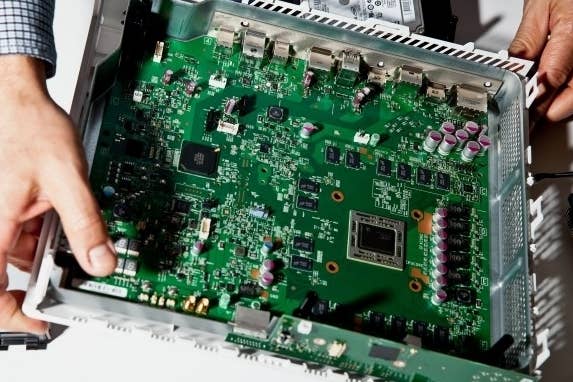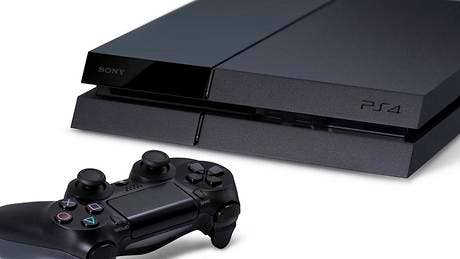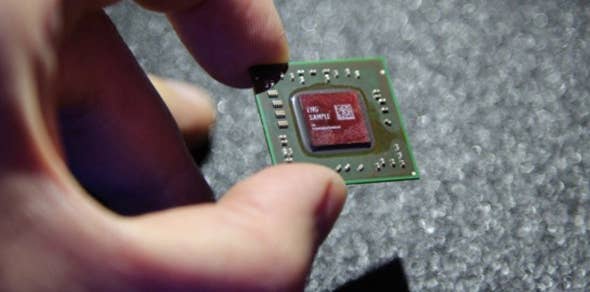PS4 and Xbox One high volumes no problem for AMD
AMD's Saeid Moshkelani on his company's next-gen "clean sweep" and high-end PCs driving innovation
AMD owns the next-generation of consoles. In the past, game consoles were more custom and piecemeal: a little IBM here, some AMD there, a tiny bit of Nvidia. With the reveal of the Xbox One, PlayStation 4, and Wii U, it's clear that AMD has put significant legwork into locking its PC competition out of the game console market. At E3 2013, GamesIndustry International spoke with AMD corporate vice president and general manager of Semi-Custom Business Saeid Moshkelani about the milestone and AMD's place in the game industry.
"It is a very, very proud moment," replied Moshkelani when asked about AMD's position in the next generation. "They are very complex projects, very complex designs, and it doesn't happen overnight. It has been a journey of over two years in development to get to today."
The PlayStation 4 and Xbox One have semi-custom AMD Jaguar system-on-a-chips (SoC) at their core, while the Nintendo Wii U has an AMD Radeon graphics processor paired with an IBM PowerPC CPU. Moshkelani explained that all the chips we designed in concert with the platform holders, based on "very different visions and philosophies."
"There were different teams that were dedicated to these projects, working with the customer and collaborating with them to develop these chips," he said.

Microsoft's Xbox One and Sony's PlayStation 4 are expected to launch this holiday season. While Microsoft has had a rough time post-E3, Sony has raised sales estimates of the PlayStation 4 and GameTrailers recently reported that Sony has also allowed GameStop to take "unlimited" pre-orders on the PlayStation 4. We asked Moshkelani if AMD was prepared to handle the demand for both consoles on the manufacturing side.
"From a manufacturing perspective, in a year we ship tens of millions of units," he replied. "So we have a very strong manufacturing base for our APUs and discrete graphics. We leverage the same manufacturing infrastructure to develop for game consoles. So the volumes were not something that actually raised an eyebrow for us, because we're already in high-volume manufacturing."
Having a hold on the graphics side of all three consoles puts AMD in a unique position as a bridge between PCs and consoles. Moshkelani and AMD Global Communications Travis Williams both agreed that game development and porting between both platforms can be smoother with AMD's help.
"We are working with all of the major developers for PC games, as part of our strategy for PC products. It enables the developers to optimize their games on PCs by working with us. And then at some point, they can port those to consoles," said Moshkalani. "Historically, the consoles were all different architecture. Porting from PC to PowerPC architecture was not as easy. AMD makes it much easier to port games back and forth."

"You look at the PS4 and the Xbox One now being x86-based and you look at where gaming is in the PC industry. So now you have game developers coding for x86, working with the console vendors, working with AMD to optimize their solutions for x86. It helps speed time to market, lowers costs, and now they don't have to worry about coding for different platforms across console and PC," added Williams.
Despite the fact that many have repeatedly predicted the death of the PC market with the rise of tablet and smartphone gaming, Moshekelani said that AMD's discrete GPU division is "thriving and growing." He and Williams both believe that high-end PC gaming will continue on as a driver of future innovation.
"If you look at what drives innovation, it's the investment and research in those high-end products," explained Williams. "That's what helps fuel products like the SoCs you see in consoles and notebooks. That's going to continue to be a huge revenue stream for AMD. If you look at what we announced today, it's a 5GHz CPU. That should answer your question about our commitment to high-end PC gaming."
"Those are the technology drivers. In 2000 or 2001, we were the first one to announce the 1GHz CPU. Today, we're the first ones to cross 5GHz," added Moshkelani. "That trend is going to continue. The demand for more horsepower is always going to be there. What is added to it is battery life. Consumers want all of the horsepower, but they want it to have a 15-hour or 24-hour battery life. That changes the design target to something new, but that technology that you develop [at the high-end] is what gets taken to new markets."
"If you look at what drives innovation, it's the investment and research in high-end products"
AMD Global Communications Travis Williams
AMD's semi-custom division is a way to help the company diversify its business, according to Moshkelani. During its Q3 2012 earnings release, AMD CEO Rory Read said that the company wanted 40 to 50 percent of its revenue to come from non-PC-related sources. Moshkelani agreed that semi-custom and embedded chips are "going to be a larger portion of the business than they traditionally have been." He said the shift isn't as drastic for AMD as many think, with mobile, gaming handhelds, and cloud gaming all being on the roadmap.
"Developing products that are suited for tablets or mobile computing is absolutely something that we are focusing on. It's not something where we have to do something drastically different. We know how to implement low-power technology. It wasn't a necessity for us before, but now that we are focusing on tablets and ultra-thin notebooks, absolutely," he said.
"One of our goals is to be the dominant player in game consoles, handheld, and cloud gaming. The semi-custom initiative is not just about gaming. There are other markets that we're going after. There are markets where AMD does not currently play. We are using the AMD intellectual property, the AMD know-how in engineering, and being able to provide unique solutions for market segments that are growing," Moshekelani explained. "But gaming is our DNA. It's not just this generation of consoles. We had a clean sweep with this generation, but we were in Xbox 360 and Gamecube. Gaming has always been a part of our business. We want to be the dominant player in gaming SoCs."
[Xbox One Image via Wired]

